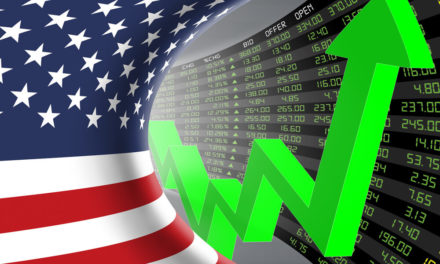The United States and China agreed to a truce for now in their ongoing trade war, and Wall Street’s surge upward after the news could be seen as a positive for investors. But some strategists are warning that the rally isn’t going to last.
The market opened Monday on a very positive note with the S&P 500 index rising 0.5% to reach an all-time high of 2977.86. The Dow Jones Industrial Average and the Nasdaq composite also had strong openings. The rally lost a bit of steam towards the end of the day, but all three indexes were still trading positively around 2:30 p.m. on the East Coast.
Bank of America Merrill Lynch and Morgan Stanley told CNBC that a summer correction could still be on the horizon, even after tensions between the U.S. and China seemed to die down a little after President Donald Trump agreed to delay additional tariffs on Chinese imports during the two leaders’ meeting after the Group of 20 summit in Osaka, Japan on Saturday. Trump also said he would partially lift the ban he set on Chinese telecommunications giant Huawei.
“We still expect a 10% correction during 3Q as this past weekend’s agreement is viewed as a sell the news event,” wrote Morgan Stanley chief U.S. equity strategist Mike Wilson.
Bank of America strategists added: “The fact that there was no major breakthrough is consistent with our ‘no pain, no deal’ framework: at the moment the economy and markets are not weak enough to incentivize the US to make compromises.”
While the market is reacting very positively to the news of a truce, some analysts argue that a new deal between the U.S. and China won’t happen until the market takes a big dive.
“We expect a deal with China, but but it could take a large market correction to get there,” the BofA strategists wrote. BofA’s chief U.S. equity strategist Savita Subrahim says the market could see the S&P 500 rally to 3,100 points if an actual deal were to occur.
BMO rate strategist Ben Jeffrey argues that the bond market is showing some apprehension to the announcement, and the truce did not remove the 25% tariffs already in place on $250 billion in Chinese imports which could have a greater economic impact.
“I think it’s just the fact that it’s pretty similar to what we saw at the last G-20, back in December. While the cease fire is incrementally good news, it really doesn’t change anything from a longer term perspective,” Jeffrey said.
“We’re reading this as people are apprehensive in seeing this as an inflection point,” said Jeffrey.
Here are some other reasons analysts are concerned about the longevity of this current market rally, per CNBC:
‘Several reasons for concern’
“The markets are likely to view the summit as a modest positive in the short run. But stepping back, we see several reasons for concern,” wrote BofA strategists, pointing to the U.S. tariffs and also the nearly 20% tariffs on $100 billion of U.S. exports to China. “Tariff termites have been eating away at growth in China and its trading partners in Europe and Asia-Pacific, some of whom have very little room for policy easing. In the US, the manufacturing sector has started to weaken.”
ISM manufacturing data, released Monday, slipped to 51.7 from 52, but was better than the 51 expected. New orders in the report were at 50, just barely signaling expansion, and down from 52.7 in May.
BofA strategists say they worry that the Fed will act to help the economy but it could just prolong the trade war.
“The Fed is determined to raise inflation by sustaining above-trend growth. To this end it seems willing to offset the negative impact of the trade war on the economy. But the risk is that the ‘Fed put’ could encourage an even tougher stance on trade, which would trigger even more Fed accommodation, and so on. The end result would be a loss of Fed policy ammunition, with an economy that is still soft,” they noted.
Wilson said the market will also face weaker earnings reports, and that corporate guidance could be negative since earnings estimates for the second half and next year remain too high.
“The second half of the year tends to be a seasonally weaker time for earnings revisions and the underperformance of seasonality in revisions seen year to date is not an encouraging sign. If management teams hold out hope for a recovery by linking growth to a resolution on trade, we think it just delays the disappointments and the market likely will not buy it like it did in January,” Wilson noted.




